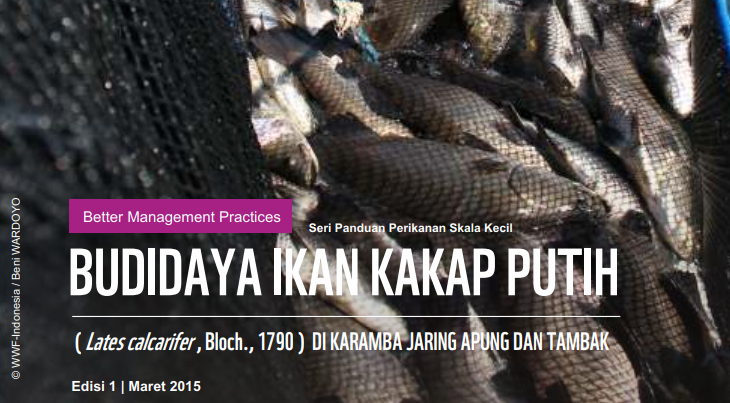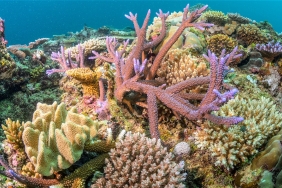BMP WHITE SNAPPER FISH FARMING
By: Agis Riyani & Wahju Subachri (WWF-Indonesia Aquaculture Team)
Garlic snapper is one of the fishery resources whose utilization comes from catch and cultivation. White snapper has more legit meat compared to other fish, so this fish is widely processed into fillet, which is much in demand by the export market.
Because it has relatively faster growth and is adaptable to its environment, white snapper is easy to cultivate. The technology of white snapper cultivation that is widely developed in Indonesia is an intensive system using floating net cages in the sea and stuck net cages in ponds. Areas in Indonesia that act as centers of snapper production are the Riau Islands, DKI Jakarta, and Bali.
Snapper aquaculture is an alternative to reduce pressure on nature due to overfishing. However, in practice, the development of sea bass aquaculture is also faced with various problems, such as the potential to cause social conflicts due to the placement of cages that are not in accordance with the Regional Spatial Plan (RTRW), the use of unqualified seeds, the use of prohibited chemicals, a decrease in the quality of environmental carrying capacity due to excessive use of feed, and various kinds of disease threats.
As an effort to deal with these problems, WWF-Indonesia compiled a guide entitled "Better Management Practices (BMP) of White Snapper Fish Farming". This BMP is one of WWF-Indonesia's contributions in supporting the improvement of responsible and environmentally friendly white snapper farming. This "BMP for White Snapper Aquaculture" was developed through a process:
- Field data collection;
- Discussions involving experts in white snapper aquaculture from government agencies, academia, and grouper fish farmers;
- Literature study of other research results.
This BMP is a flexible (living document), which will continue to be refined in accordance with developments in the field and input from relevant parties. With this "BMP for White Snapper Aquaculture", white snapper farmers can implement practical aquaculture practices, which in turn will have a positive impact on business sustainability and environmental sustainability.





